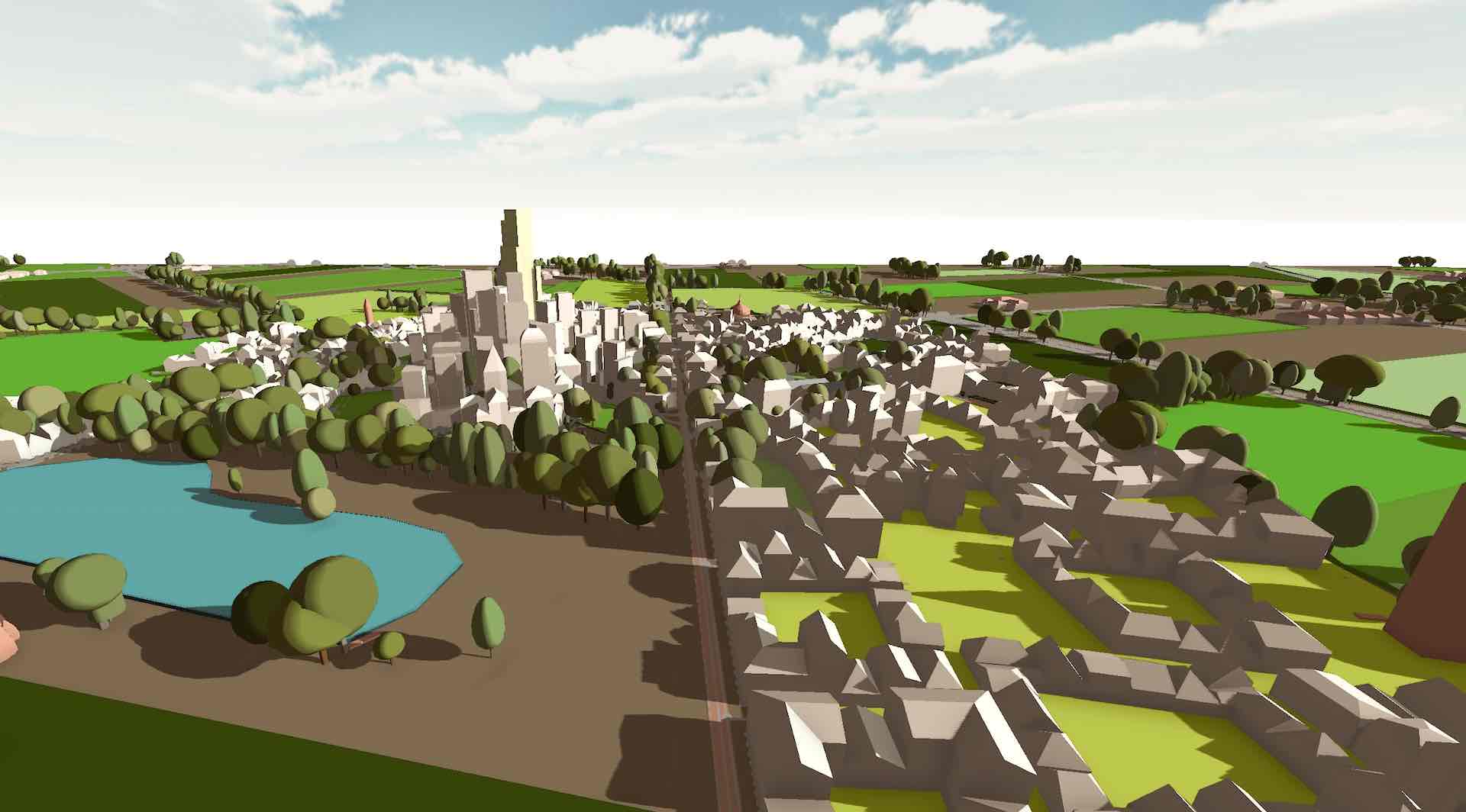Oriented toward or away from the sun depending on climate, rooms in attached dwellings can still get plenty of natural indoor light.
#B4placeBlurb #ProximityParadox

Compact Urban Design
Oriented toward or away from the sun depending on climate, rooms in attached dwellings can still get plenty of natural indoor light.
#B4placeBlurb #ProximityParadox
Multigenerational living has become a rarity, by design and regulation. To provide for more harmony in human experience, we’ve got to get back once again to places where people can live throughout all of their stages of life.
In compact places, rooftops and terraces filled with container gardens act as replacements for backyards–the skyline vistas from these elevated perches are also great complements to the cozy views down on the streets.
Over the past year or so, we’ve been sharing B4place Blurbs, which are visual flashcards describing some of the elements behind the great places that inspire our work. You can see all of them so far here on our blog under the #B4placeBlurb category.
We hope you enjoy them!
Rowhouses/Terraced Houses afford the opportunity for close proximity and the thermal and structural benefits of shared walls. This is why attached buildings have been the historic default around the world, no matter how small or big the place.
In compact places, boundaries between neighborhoods don’t have to take the form of formal walls or borders. However, symbolic and decorative gateways create a special atmosphere and sense of place for residents and visitors alike.
We need high vantage points to scan the horizon–it’s in our DNA. Low buildings spread far apart are now the rule, only made possible with cars and cheap energy. 3-8 stories with occasional towers used to be the norm and should be a choice again.
Wall-climbing vines are perfect for compact places, offering an abundance of vertical foliage in a small space. Often up-close and at eye-level, they bring life and texture to intimate spaces and are a simple way to experience the changing seasons.
One of the simple joys in life is getting the daily essentials within a short walk, passing friends and acquaintances along the way. Corner stores are the ultimate compact-living enabler, replacing the need for large pantries and big refrigerators.
The passage of time, honored in cemeteries at the heart of any community, is especially evident in fall. Leaves blown from trees as the cold winter comes is a perfect symbol of death’s role in the propagation of life.
Happy Halloween!
Small workspaces on the ground floors of townhouse blocks encourage dynamism and liveliness. Segregation of uses made sense back in the heyday of heavy industry. But nowadays, like in pre-industrial times, work is often quiet and easily contained.
Parks, plazas, and other social places that invite dozing off are hallmarks of a well-considered public environment and the heart of an enduring community.
Communities in which a child could freely explore were the norm in the past. It’s a vital aspect of ultra-compact places, which gives children the world-view and engagement skills they need to navigate both the hardships and joys of life.
The countryside is more valued when it has thriving, compact villages and hamlets interwoven within it. These are the bucolic landscapes through which people love to roam, and where kids with their dogs while away the afternoon.
Who doesn’t love going out at night and reveling into the late evening hours? In compact places, nighttime action is walkable, fun, and safe.
Exterior arcades protect the entry to buildings, and when long enough become rhythmic urbane walkways.
People need varying levels of solitude and remoteness when in nature. Isolated and wild parks are important, but it’s the well-attended, daily-use pocket gardens that make places complete.
At long tables in pubs, in traditional food courts, or at local diners with affordable food, sharing meals makes a community strong. Rather than each household having to always cook a full meal by themselves, people can enjoy the company of their neighbors.
The villages and towns people love to visit around the world feature directly connected buildings. The aesthetic and community relationships that are only possible through such close proximity have also proven to be more economically and materially sustainable.
Pedestrian-only streets have become some of the most valued places around. No matter where in the world, they provide a public space for incidental social interactions, along with economic simplicity and vitality.
Enduring, enjoyable places restrict the wide, higher-speed streets to the outer borders–never through the heart of the town. These larger streets are also perfect for public transit like streetcars
Children thrive when they’re at the center of daily life. Schools work best when they’re an integral part of the community–even sharing public spaces such as city parks for daily recess.
People love to gaze out the window to life happening below. Connected to the daily rhythm of the street, with serendipitous hellos between neighbors, acquaintances, and passersby.
Every place needs its own local town hall to be the transparent nucleus of governance. Located at the community’s heart, it’s at the center of public activity and gatherings.
Street carnivals fulfill a primal desire to explore a bit of the novel and exciting. People need carefree entertainment that takes them beyond the banal for awhile. Public squares and promenades can become temporary fantasy zones.